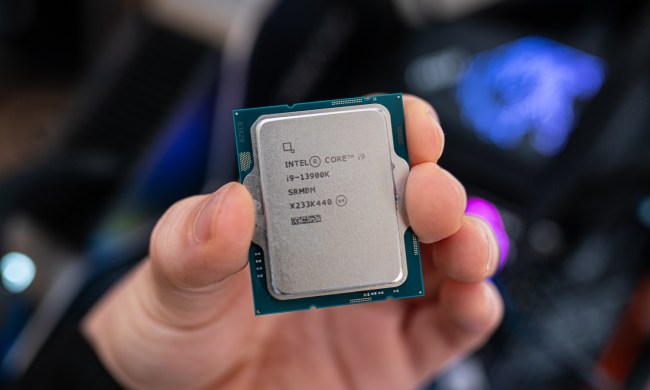Benchmarks for Intel’s unannounced 12th-Gen Alder Lake-S desktop processors have leaked, suggesting that the company may be progressing nicely with its silicon development. Alder Lake-S will be Intel’s first desktop processor to switch to a 10nm node, so gamers can likely expect some performance uplifts, but the chip will also bring more architectural changes as well, like the adoption of the big.LITTLE core design from mobile.
Even though the Geekbench benchmark results spotted by Twitter user @TUM_APISAK revealed that the 12th-gen processor tested contained 16 cores and 24 threads, the core configuration is different from Intel’s current desktop processors or even rival AMD’s Ryzen 5000 CPUs. Though unconfirmed, rather than equipping Alder Lake with 16 total high-performance cores, Intel is said to be configuring this chipset with eight Golden Cove cores with 16 threads and eight Gracemont cores with eight threads, Wccftech reported.
Golden Cove and Gracemont in action

The Golden Cove cores are the high-performance cores and the Gracemont cores are the energy-efficient cores based upon Intel’s Atom architecture. It’s expected that both types of cores will provide you with improved single-threaded performance, while the Gracemont cores will also have higher clock speeds and vector performance. Intel is also expected to build in enhanced security features and improve artificial intelligence performance on its high-performance Golden Cove cores.
While combining high performance and efficiency cores in a hybrid design makes sense on mobile to help with power consumption, it’s unclear why Intel is moving towards this design on desktop where battery life is not a concern. It’s unclear how the hybrid mix of 16 cores will perform against a traditional core design on the 16-core AMD Ryzen 9 5950X, which comes with 32 threads and has a base speed of 3.4GHz.
The Geekbench test revealed that the early engineering sample of Alder Lake S — revealed to be a “Genuine Intel Family 6 Model 151 Stepping 0 — was clocked at 1.40GHz, which was a low speed. Additionally, it was also revealed that the chip had a maximum speed of 17.6GHz, likely an error given that an early silicon prototype was used with the benchmark.
The processor scored just 996 points in the single-core test and 6,931 points in the multi-core test. These low numbers shouldn’t be a concern — and aren’t indicative of the final processor’s performance — if you’re looking at upgrading to an Alder Lake desktop, as they were taken on an early engineering prototype. We expect that leaks closer to launch will reveal clock speeds and performance that are more in line with how Alder Lake will perform once launched.
Additional specifications revealed that the processor was configured with 30MB of L3 cache and 12.5MB of L2 cache. And even though it was tested on an internal Alder Lake-S ADP-S DDR4 CRB board with 16GB of memory, it’s unclear if DDR4 or DDR5 RAM was used.
Ready for 2021

Though Intel hasn’t given an exact launch date for Alder Lake-S, the chip is expected to launch in late 2021. Hopefully, we’ll begin to learn more about Alder Lake’s true clock speed and performance closer to launch date.
Prior to the leaked benchmark, Intel had posted a video detailing how it was leveraging some of the effects of the pandemic to retool its offices and factories to meet demands for its silicon. Addressing earlier stories that the company was not able to meet demand for its processors, Intel claimed that it was able to double production capacity and yields of its chips in the last few years, according to the marketing video. Hopefully, Intel’s efforts would mean that the company’s processors won’t undergo the same shortages that have plagued AMD and Nvidia in recent months.
The Alder Lake chipset was benchmarked using Intel’s LGA 1700 platform, which also adds support for DDR5 memory, PCIe 5.0 as well as the latest Thunderbolt and Wi-Fi standards.


